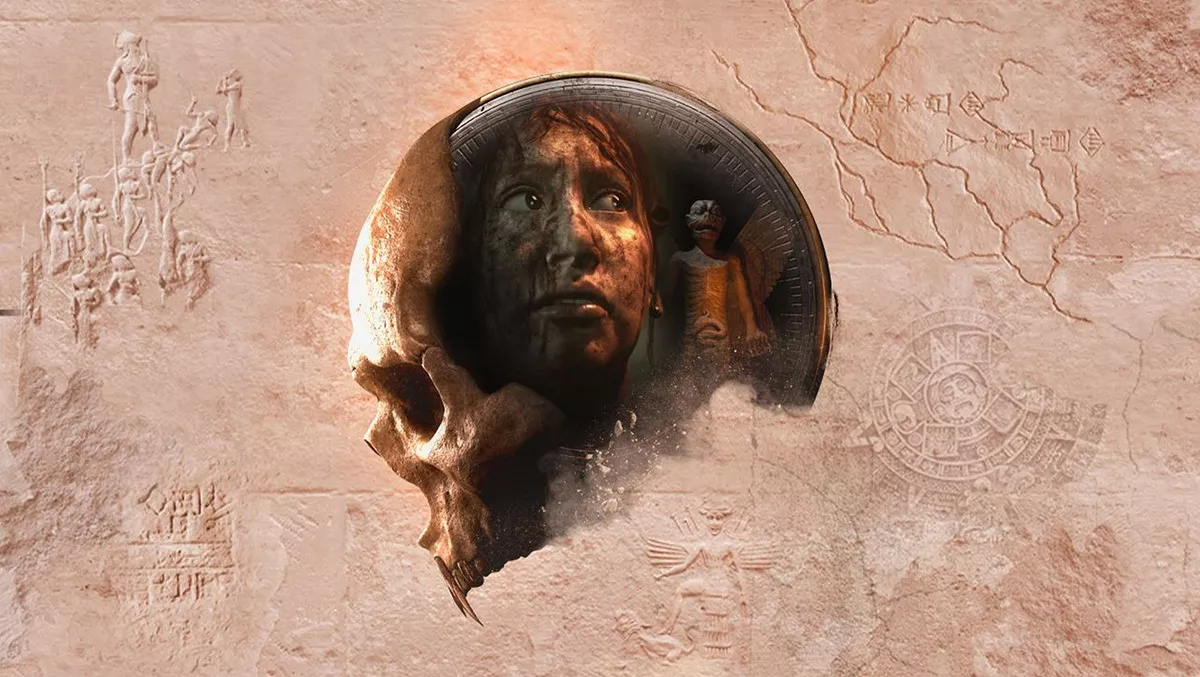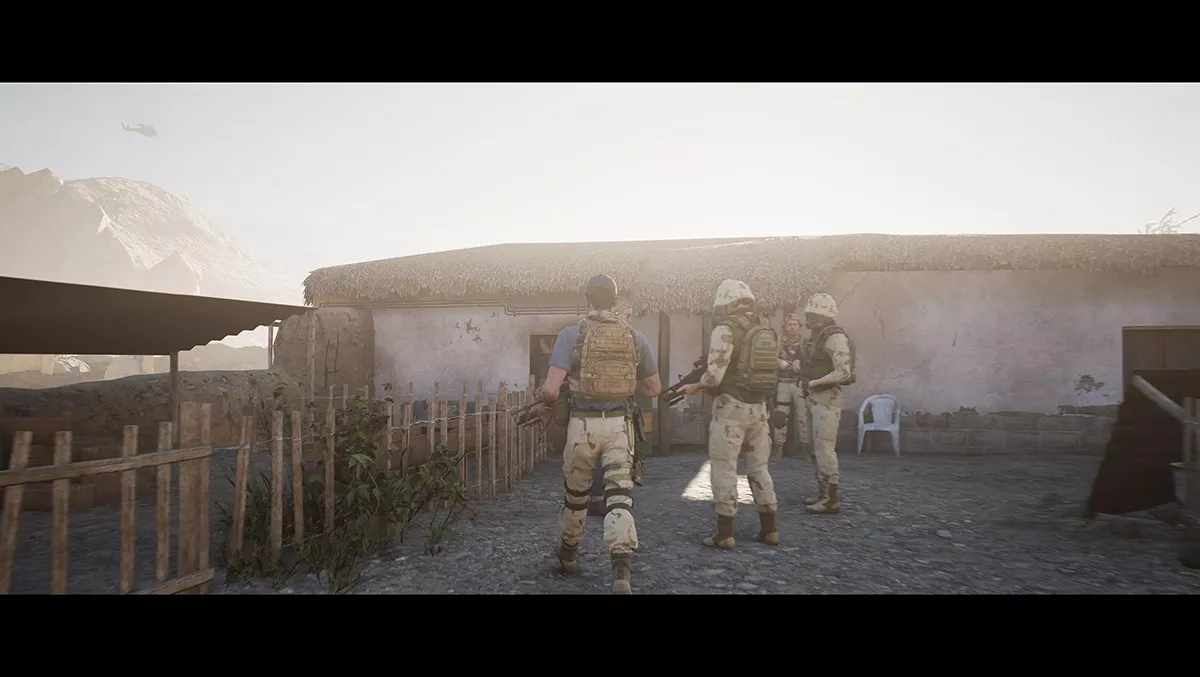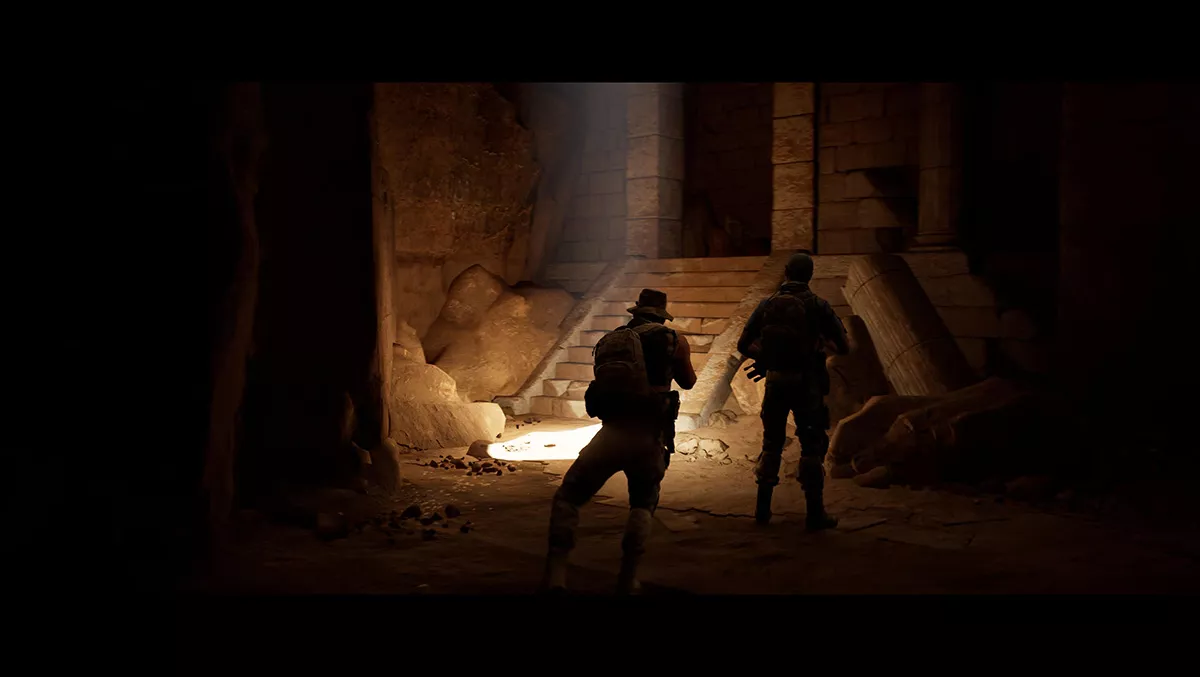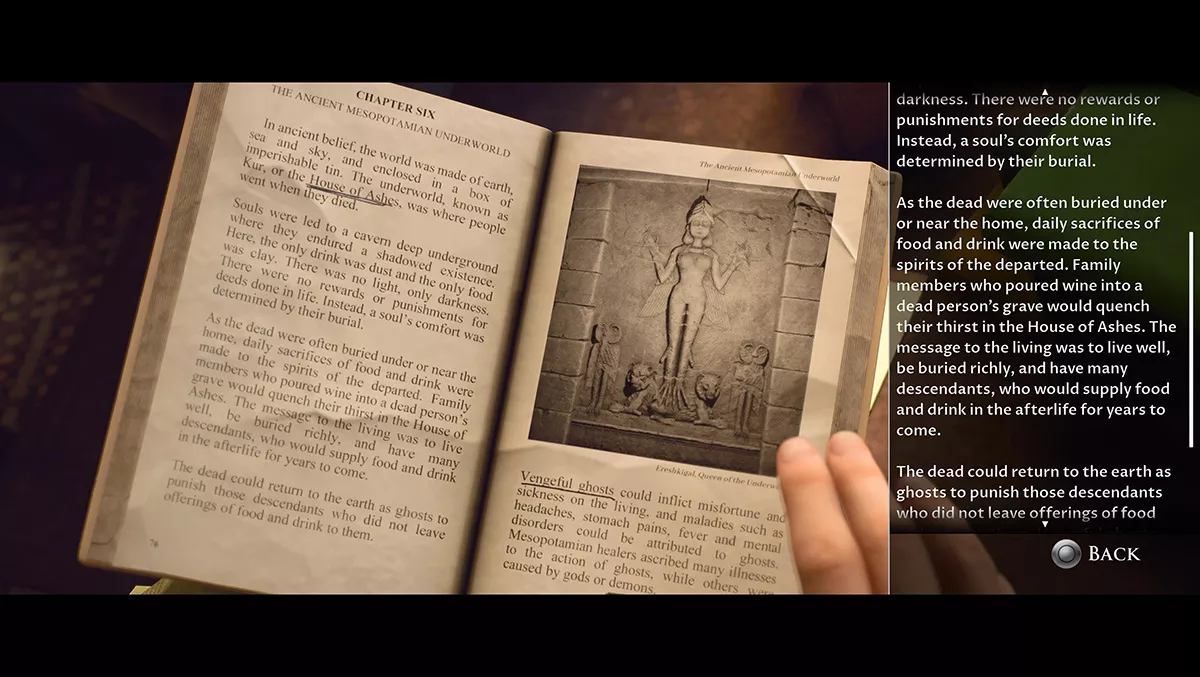
Game review: The Dark Pictures Anthology: House of Ashes (PlayStation 5)
The third game in Supermassive's series of macabre tales, The Dark Pictures Anthology: House of Ashes, takes players back to 2003 during the Iraqi war. Something very dangerous lurks beneath an Iraqi village, and it's not Saddam Hussein's weapons of mass destruction.
I love games that emulate TV shows. Battlefield Hardline and Alan Wake are prime examples whereby the game is split into TV-like episodes complete with a "Previous on…" sequence. I'm not sure why I find it so cool. But I do.
The Dark Pictures Anthology takes the TV aesthetic and turns it up to eleven. Each game feels like an episode of a TV show. The tease, the grand credits sequence, and the enigmatic introduction feel straight out of Tales of the Unexpected or The Twilight Zone.
As with the previous games, our host for this adventure is the slightly sinister Curator, who addresses us from his large library. The well-enunciated gentlemen may or may not be the devil himself. He certainly seems to gain some amusement from our poor choices in the game and the demise of the characters.
House of Ashes, as with its predecessors and Supermassive's PlayStation exclusive Dark Pictures precursor, Until Dawn, is a story-driven cinematic horror game. Players get to control the various characters and decisions and actions on their behalf. These affect the way that the other characters react and how the story plays out. The player's choices have consequences, making no two playthroughs the same.

The previous stories were more psychological horror rather than the supernatural occurrences that the games lead the player to believe. House of Ashes is a bit more on the nose. The plot became obvious to me long before it was revealed to the protagonists.
The game starts with a sequence from thousands of years ago showing the demise of an ill-fated Sumerian king. The story then switches to 2003 and a CIA-led US marine operation behind enemy lines in Iraq. They are looking for an underground facility that has been detected, possibly housing Saddam's fabled WMDs. When a tremor causes sinkholes to appear, instead of a weapons cache, the team finds the remains of an ancient palace.
Trapped below the surface following the cave-in, they find evidence of an archaeological dig from some fifty years before. The subterranean ruins hold a dangerous secret putting the lives of the entire team at risk as well as that of a member of Saddam's Republican Guard trapped along with the US team.
The story follows a similar haunted house theme as the previous games, including Until Dawn. There are jump scares aplenty as well as some truly gruesome horror imagery. I found myself getting really invested in the characters only to make a decision that cost them their lives. Regardless of the outcomes, I felt that the game gave me a unique and engaging story based on my actions, which was quite rewarding.
The setting is intriguing, and I found the story riveting enough that I didn't want to put the game down. The characters are well fleshed out, if a little stereotypical. Each one has an arc in the story that get invested in their survival, making their demise due to your poor choices (or bad reaction time) all that more poignant.
The game flows in a manner that makes the story feel organic regardless of the player's decisions. It's only when revisiting the game from the start that you realise just how much your choices influence the story. Who lives and who dies by and large is down to the player.

As well as directly controlling characters' movements, there are quick-time events that require fast button presses. Players are also frequently asked to make choices as to what the characters will do or say, affecting not only the immediate situation but also the relationship between the characters. Available options may depend on how the characters feel about each other due to the player's prior decisions.
The game graphics have improved as the series has progressed. I believe that this one gives players better control of the camera to appreciate the detail in the environments, which are expertly lit, creating foreboding shadows and darkness that still allows players to see what's going on. The character models do still flicker between the photo-real and uncanny valley. For the most part, though, they are well animated with eyes that seem quite soulful and faces that convey emotion.
House of Ashes can be played solo or with others taking on the roles of the different controllable characters in the game. Playing this way is a lot of fun and serves to ramp up the tension, as one player's actions may affect the fate of another's character. It's a fun and unique way to play such a story-focused game.
There are loads of collectables and items to discover in the game. Some that unlock premonitions, and others fill in the backstory of what happened to the archaeologists from years ago. Playing through again allows players to find collectables that they may have missed the last time around.

Subsequent playthroughs can be the standard theatrical version or the Curators Cut. The Curators Cut mixes things up a bit with new angles slightly different scenes. I can't tell you just how different the Curators cut is, as my second run through the game was pretty different overall due to me taking some different paths and choices. Whilst I'd not recommend immediately restarting the game, this is a title, like the others in the series, that you can return to after a while for a radically different experience than the last time.
The Dark Pictures Anthology: House of Ashes is possibly the strongest in the series yet. The Dark Pictures Anthology is certainly getting better as it goes on. I still have a personal fondness for the first game in this format, Until Dawn, but House of Ashes just about tops it.
Verdict: 8/10


